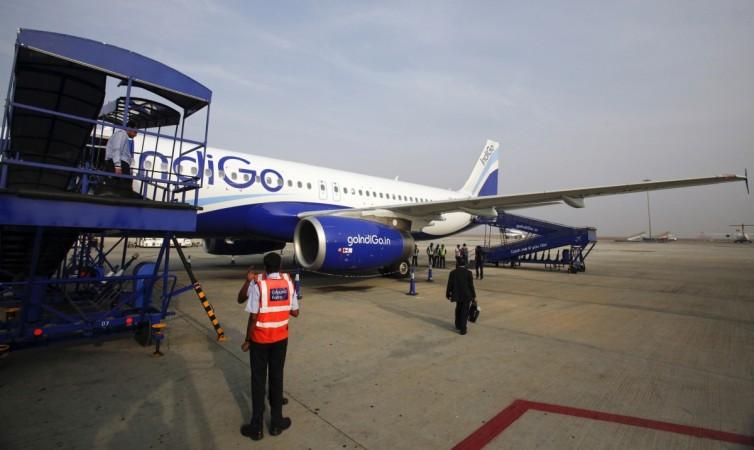After the nationwide lockdown gets lifted on May 3, how long will it take for flight services to resume operations back to normal? Primarily domestic civil aviation and the international travel operations to kick-start once again. A lot of people are stuck in between nowhere due to the sudden emergency declared by the Modi government on March 24, and the nationwide lockdown imposed. It's been over a month that Indian skies are clear and airline officials await some 'good news' from the DGCA.
![[Representational Image] Aircraft](https://data1.ibtimes.co.in/en/full/628076/aircraft.jpg?w=959&h=391&l=50&t=40)
According to a senior AAI official, "Indian carriers have around 650-odd planes in their fleet and parking for these airplanes is not a problem. All airports together, including the government-owned Airports Authority of India (AAI) airports, can handle many more planes."
Planes parked on runways: No waiver on parking fee issued
The Delhi airport has parking bays for 196 aircraft, while the Mumbai airport has parking provisions for 100 aircraft. Some of the planes are also parked on runways as a temporary arrangement, with the Delhi airport being the only facility that has three runways. A large number of planes flying domestic routes came in to park in the facility. As India halts international flight operations and grounded all domestic flights the planes are now parked at various airports until bookings resume when Covid-19 is under control.
The airlines, however, will have to pay a parking fee for their flights at the airport and the Indian government hasn't taken any steps to issue a waiver on the parking fee for flights parked at airports across the nation. Before lockdown was implemented, Indian airports handled about 3,330 domestic and 580 international departures per day across cities, according to the approved flights' schedule until March-end.

During operations, the planes used for flying operations during the day, are the same ones used for international operations at night. So at any given point in time, the number of planes parked at the airport is never high.
While many countries such as the US, Australia, Singapore, France, Sweden, Norway and New Zealand have announced financial relief packages for airlines in terms of loan guarantees, funding assistance, and tax rebates, India is yet to announce a bailout package for various industries including the aviation sector. With the current support provided to the airlines sector, the road to recovering the losses endured during the coronavirus pandemic can take years - if not even a decade.
When flying resumes: Post lockdown measures by the Govt
As the lockdown gets lifted and the aviator sector heaves a sigh of relief to take on new heights, a couple of restrictions have been imposed by the government as the country slowly moves towards achieving normalcy of life, these include - domestic airline carriers may have to pool flights if the number of passengers flying is low.
Also, passengers will be asked to report much earlier than the current norm of 60 to 120 minutes, to allow time for detailed security and health check of passengers boarding the aircraft. The new post-coronavirus normal at the airports will see the rigorous screening of passengers, cabin crew staffers donning masks, gloves, keeping sanitizers handy and no food will be served in-flight.
With the need for social distancing emphasized by the government, the interaction between business class passengers and the cabin crew will be restricted to a bare minimum of 3 or 4 during a medium-haul flight. Since it is economically not feasible to fly only a third or fourth of the total capacity of an aircraft, then the passengers stranded to board a Mumbai-Delhi flight can be pooled together. India's largest domestic air carrier will ramp up operations once the ban is lifted and discontinue onboard meal services for a brief period until traces of coronavirus spreading vanishes completely.
![Airport security [Representational Image] Airport security](https://data1.ibtimes.co.in/en/full/666349/airport-security.jpg?w=649&h=432&l=50&t=40)
With lengthier security checks and minimal touch points of contact between the aircraft staff and passengers, the end-to-end travel time is expected to increase with passengers required to report at the airport two to three hours prior to their flight's departure. Also, baggage check-in and security checks will take more time than usual, considering the implementation of social distancing practices at airports. Also, points of non-human contact such as airport self-check-in kiosks to facilitate web check-in will be emphasized upon for passengers traveling.
Hardeep Singh Puri, the country's civil aviation minister, tweeted on April 20, saying that flight restrictions would be lifted "once we are confident that spread of the virus has been controlled and it poses no danger to our country and people" and reiterated that no decision has yet been taken about when to reopen flights.

Air Asia intends to recommence business operations in a phased manner from May 4, with only 24 aircrafts flying at reduced frequencies between cities and bookings for its flight services have already started. The airline anticipates that it will take some time for passenger traffic to build up, and the first crowd of people will be those stranded at different cities, waiting to get back to their respective homes, once the lockdown ends.
Meanwhile, Air India and the Indian Navy have been put on standby by the Government to evacuate migrant Indian laborers from Gulf countries, as the COVID-19 pandemic intensifies. The Ministry of External Affairs (MEA) is consulting with the States and Union Territories (UT), and the government to make necessary arrangements before the process begins as the lockdown gets lifted on May 3.














